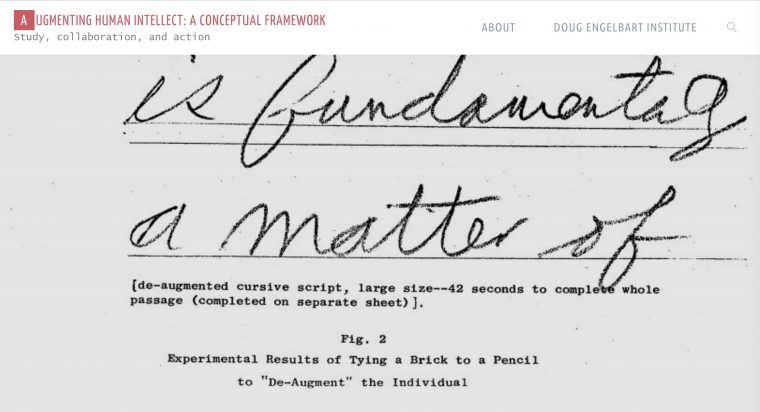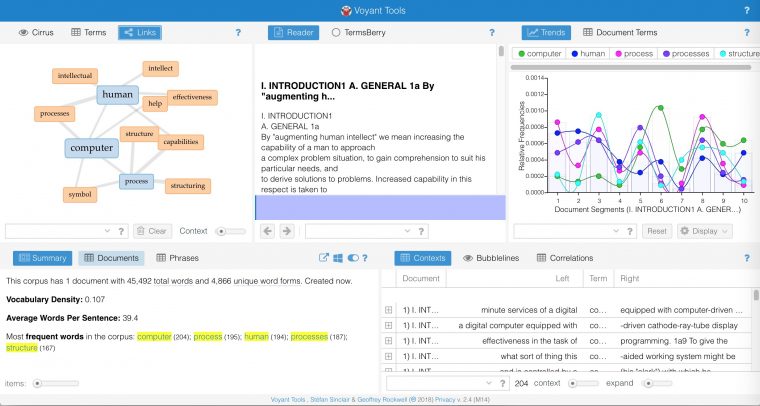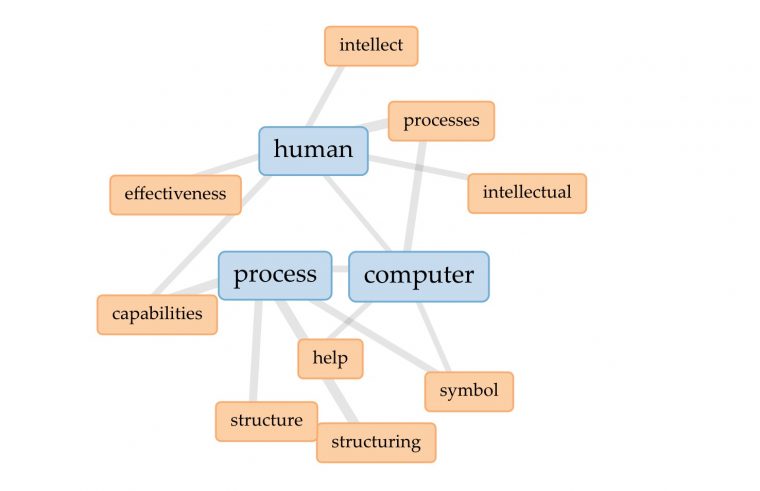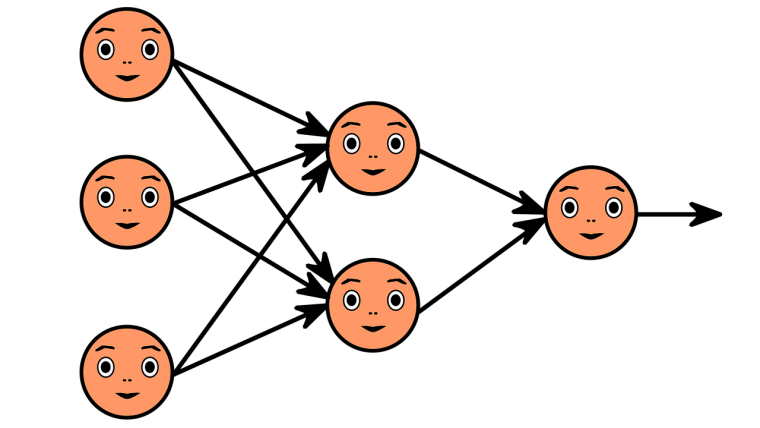Originally published at framework – CogDogBlog (see it there)
Here goes one of those blog posts that start out with only a shred of an idea, so in the writing, maybe something emerges.
I’m thinking about a project I am working on with Gardner Campbell. Yes, that Gardner Campbell. We go way back, Dru Glu and I, and his ideas (see personal cyberinfrastructure and Bag of Gold) are foundational to much of the work I have done since the mid 2000s, domains of ones own.
Gardner is a deep studier, follower, research of the work of Doug Engelbart a person you may only have some mild associative connection with in terms of these computing machines. Back when I was working for NMC we collaborated on a networked open seminar (New Media Faculty Seminar), something long enough ago that the web sites we made for it are gone, or left for shreds in the Internet Archive Wayback Machine.
This was a seminar in which faculty were invited to dig into meaty essays on the New Media Reader (wow that’s still online, whew), one of which was Engelbart’s Augmenting Human Intellect: A Conceptual Framework.

2010/365/26 Turn the Machines Off flickr photo by cogdogblog shared into the public domain using Creative Commons Public Domain Dedication (CC0)
I at least have my own blog posts in tact.
In his role to support faculty development at Baylor, Gardner is this semester running an in-person faculty seminar with a similar syllabus — New Media as a Platform for Integrative Learning: A Faculty Development Seminar. And thus we hatched the idea to create a way for people beyond this group to be part of the seminar- not everything that there like a Massively Online Open Course, but doing the same readings, watching the same videos, and then we will have both the Baylor group and anyone else following along from afar engage in discussions in an online shared space.
Being an outside participant is completely voluntary, and if you want, you can just lurk, but we think it will be much better if you are right in the mix.
Well that is the plan, it is loosely joined and likely sometimes out of control.
What we are doing at NMC is communicating to people about this, and every Monday (the Baylor group meets Tuesday afternoons) I am posting an audio interview with Gardner where we will recap what happened the week before and then he does some foreshadowing about what is coming the next week.
The Internet Archive again saves the day; the NMC URL http://www.nmc.org/nmfs is DOA but thanks WayBack Machine
Gardner and I did an NMC podcast series where we recapped the topics and network activities; these too died when NMC revamped web sites and letter went 404, but I still have my media archives. The session we recorded for the recap of “Augmenting Human Intellect” happened to be from the windy rooftop of a hotel where we were both at a meeting. These guys sound giddy:
But enough nostalgia, what’s going on now? Well Gardner is collaborating with the Doug Engelbart Institute to lead a networked, collaborative close reading of the original paper starting at a date to be announced soon in January 2019. He reached out to me to help brainstorm and build the web site (the former is the real gem in this project, our tangential conversations).
We’ve situated it within the Thought Vectors in Concept Space domain, which was the home in 2014-2016 for a cMOOC Gardner lead at Virginia Commonwealth University. We hatched the idea to not delete or move any original content, using the WordPress trick to create a static page for the domain front door, with one fork to the new project site in its own subdomain and the other to an internal page with the previous sites home page for UNIV 200.
No thoughtvectors.net URLs were broken in the process. Is it really that hard to preserve URLs? Hum.
Ah, but here is the new site, mostly a placeholder for the project, it’s own WordPress site:
This won’t be a networked blogging/syndication thing, and twitter is not central either; we are focussing on the Hypothes.is web annotation tool to invite people to read/annotate/discuss this paper together. We have some ideas to encourage voracious tagging.
But the other piece that’s critical is Gardner’s connections with other scholars, and colleagues/disciples of Engelbart who we are going to be annotating along with (we are planning some live video sessions as guests annotate and discuss their thinking in real time).
We are also in discussion with Remi Kalir for ideas to get people involved and actively annotating, and as well putting to use the new CROWDLAAERs tool to examine the details of the annotation activity.
Oh, and we have a bot.
For our conceptual framework, we tend to favor the view that a language does exert a force in its own evolution. #augmentintellect
— DougEngelbot (@DEngelbot) November 28, 2018
We are using Zach Whalen’s Google Sheets Twitter Bot to have Doug Engelbot regular tweet selections form the original paper. And maybe more. Maybe.
But what is it about Augmenting Human Intellect: A Conceptual Framework that’s so important? This paper was written in 1962 yet clearly identified not only the kinds of capabilities computing machines might have, but more importantly to Engelbart, how this could enhance human capacity.
Of course Engelbart is known for his visionary ideas and implementations in what is without any question called the Mother of All Demos, a 1968 presentation where he not only discussed much of the things we take for granted in modern computers (menus, the mouse,windows, video conferencing, hyperlinks, file sharing) but literally demo-ed what he was talking about using the actual thing he was talking about.
This is all timely as December 9, 2018 marks the 50th anniversary of this event, and a symposium is happening in San Jose bringing together many people related to the demo as well as scholars and visionaries– to not only celebrate The Demo but to look ahead to see how Engelbart’s ideas (not the technical ones) but the human ones are used (or not) to address our human future.
Just for the heck of it, I put the entire contents of the 1962 paper into Voyant Tools:
One chart that jumped out, more than just the typical word cloud people do, is the Collocates Graph of the paper (this link leads to an interactive chart)
Woah, this went way more than 25 sentences, eh? Well, it’s hard not to be excited about being part of this project and also getting to team up again with Gardner. Strap on your annotation engines, and join us in January for an experience in Annotating Augmenting Human Intellect, which just sounds like the kind of augmentation the paper addresses.
Stay tuned to the web site https://framework.thoughtvectors.net/, follow that twitter bot as well as the #augmentintellect hash tag.
This is another of nine posts for the Ontario Extend 9x9x25 challenge.
Featured Image: In vain I searched pixabay for Human Process and got mostly tech oriented images. This one was last in the list as “neural network” and likely has little meaning here. Oh well, that’s image search, sometimes like shooting at images of fish in a barrel. Pixabay image by ahmedgad shared into the public domain using Creative Commons CC0.





